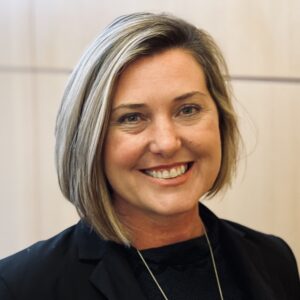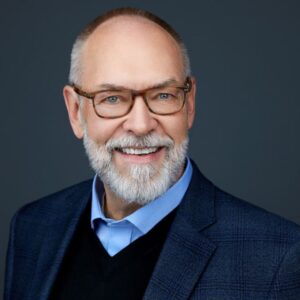Cultural dysfunction
Nursing homes were originally designed to warehouse people until they die. That's consistent with the institutional model we have become burdened by. Now, with the numbers of elderly needing long-term care services growing exponentially, the infrastructure must be a care-housing model for people until they are restored and discharged to a less costly level of care and a more productive quality of life. Death is then secondary to living as an end point.
This is why we have home care, assisted living, independent living, hospice, group housing, CCRCs, etc. For all that, it is now time for long-term care to get its professional infrastructure organized internally around the case management model. Then we can meet society's needs.
We waste time and money trying to sell the nursing home as a “home.” It is not and never can be a replacement for a home. At best it is an unpopular alternative to home. The modern-day nursing home must be a positive alternative to home, but not home itself. It must therefore:
rehabilitate and restore physical well-being as much as medically possible;
retain occupants' personal dignity;
restore emotional and spiritual well-being; and
offer to the extent possible the independent status of an individual living in a community of other aging individuals.
This requires development of a new terminology to replace the old. The “old” model speaks of nursing homes, nursing, therapies, housekeeping, dietary, maintenance, and activities and Bible study, and has an administrative focus on income (census, cash flow, profits). The “new” model speaks of wellness centers; physical, social, and educational programming; hospitality services; and spiritual support, and has a focus on outcomes (discharges to lower levels of care, optimal use of resources, benefits to the predominant government payer).
All of this requires a reconceptualization of the nursing home staffing model. The traditional departmental structure impedes staff interaction and the efficient delivery of restorative and well-ness services. It is a holdover from autocratic business practices discarded decades ago by successful businesses in other fields. Rather, the use of service-directed teams must be emphasized.
The components of the new staffing model include a complete physical, psychological, sociological, and spiritual assessment of residents' problems and needs. This will indicate where residents are to be physically located and the specialized services teams needed to provide their daily programming. This goes far beyond just the 18 problem triggers in the current MDS RAI. A physically independent Alz- heimer's wellness candidate will reside in an ambulatory care unit organized to meet that person's wellness needs (exercise, nutrition, ambulation, cleanliness, recreation, social events, spiritual events).
“Specializing” these services dictates the skills required of the staff to deliver the outcomes for each restorative and wellness candidate. No more rotating of residents and staff to balance the workload. The caregiver team is formed by function and position, i.e.:
Function | Position |
Wellness Services | |
Medications | Pharmacology nurse |
Medical Treatments | Treatment nurse |
ADL Maintenance | Fitness aide |
Restorative Services | |
Direct Therapy | Therapists |
Nursing Rehab | Rehab aides |
ADL Retraining | Restorative aides |
Psych/Social | Psych/Social aides |
Spiritual Services | Chaplains |
Hospitality Services | Hospitality aides |
Environmental Services | Maintenance and Grounds staff |
Administrative Services | Management |
Built into the team structure is a natural progression of skills that form a career ladder. The hospitality aide on a Chronic Care Unit can get certified and become a CNA, then a nurse, therapist, or social worker. The opportunity to progress carries with it the promise of more status, money, and job satisfaction—and, along with this structure, presumably less overtime is paid, thanks to resulting low absenteeism and turnover.
It is the pursuit of outcomes by the case management team that leads to the measurement of quality, satisfaction, staff morale, cost absorption, and profitability for each team.
Computer programming that uses modeling can provide structure and focus to the clinicians in their assessments and care planning so that they don't feel compelled to check everything every day at the expense of production. For example, a stroke patient with diabetes, hypertension, COPD, and CHF has some very standard needs: breathing, eating, dressing, bathing, grooming, walking, exercising, communicating—in general, activities of daily living (ADLs). And they have some very special needs: medications, therapies, restoratives (ADL retraining), and psych/social programming, for example.
So-called case management systems automatically trigger standard interventions for the standard needs and customize interventions for the special needs using templates for personalizing them into a problem-driven action plan. The case management structure is also used in individually charting and costing such targeted care.
The case management team has individual functions to perform daily by shift, and members have care plan assignment sheets on the unit to direct interventions, coordinate the various disciplines, and document outcomes. This communication system is interactive with the family, as well. In changing care plan interventions or goals, the authority to seek family and physician approval resides with the team leader, i.e., case manager. In this scenario, the problem solver is the caregiver, not the DON. The result is a new organizational strategy for long-term care.
To summarize the economic incentives of this approach:
cost of staff turnover should be reduced because of improved morale from more productive workflow and career advancement possibilities
possible savings of hundreds of thousands of dollars per annum by “flattening” the organization—i.e., replacing department heads with a smaller number of case managers
enhanced Medicare reimbursement with better justification of “rehab low” and restorative nursing programs through improved online documentation.
Other results to expect would include higher staff retention, “flagship” quality of life for residents, and more satisfied “customers” (i.e., government and other third-party payers)
For further information, phone (800) 789-4836 or visit https://www.ecaregiver.com. To send your comments on this editorial to the author and editors, e-mail rhoads0107@nursinghomesmagazine.com.
Related Articles
Topics: Articles , Housing











